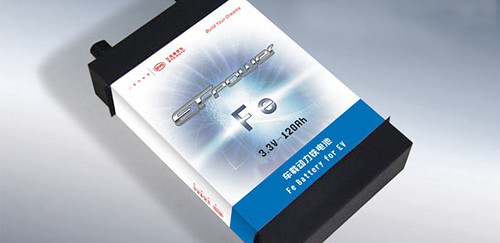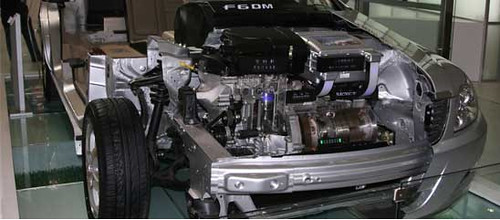This is a pretty cool infographic with some facts and figures on the current state and projected future of the global electric vehicle market. Thanks to complianceandsafety.com for the composition.
This is a pretty cool infographic with some facts and figures on the current state and projected future of the global electric vehicle market. Thanks to complianceandsafety.com for the composition.
For 30 years, engineers have been working on making cars quiet, so the criticism that electric cars are, in fact, too quiet, seem foolish. And in my humble opinion, it is completely ridiculous, kind of like this article I just read about a UK politician’s idea to put cowbells on electric cars to make them more safe.
Most modern, four cylinder vehicles are virtually inaudible at low speeds. And at constant speeds of 30-60 mph, the most audible noise of a modern sedan is the tires rolling against the pavement and wind resistance. Granted, at idle and extremely low speeds, an electric vehicle is basically silent compared to an internal combustion engine. However, you cannot even notice the discrepancy unless you are within five feet of the car to begin with.
Anyway, take a listen to the Fisker Karma in action and tell me that the electric vehicle doesn’t make any noise:
Pretty similar to a jet engine spooling up. This is a perfectly acceptable amount of sound. The whole premise of a car being “too quiet” is ridiculous. Electric cars are inaudible because they are efficient. Less heat, friction, moving parts, and noise means less energy is wasted turning the wheels.
Jalopnik has a great article on the Tesla Model S unveiling today. They also took several photos of the electric family sedan at the event. These are the most current car specs as well as production and release dates:
Via Jalopnik:
Tesla claims the Model S sedan will be produced at a rate of 20,000 units per year, with an expected 3rd quarter of 2011 start of production and an expectation of mid-2012 for when they hope to hit that 20,000-per-year number.
The Tesla Model S Sedan will supposedly have a 300 mile range from its floor pan-located, easily removable battery pack which Tesla claims will have a quick-charged capability allowing it to partially charge in just 45 minutes. The company is considering renting customers a long range battery pack for long trips. The regular batteries are available for lease and are expected to last from 7 to 10 years depending on use, but expect closer to 10 for normal use. The entire car will be covered under a warranty, the length of which is expected to be between 3 and 4 years.
The interior features 2 LCD screens, one displaying the gauges and one mounted centrally featuring a full touch screen.
Sport and AWD models are being planned, but the stock model can run 0-60 MPH in 5.5 seconds using its single-speed transmission.
The Tesla Model S will be built in Southern California, while the drive train is manufactured in San Jose. Although we initially believed they might be using a Mercedes platform, but we’re now told personally by Tesla’s Elon Musk the platform is their own design and they plan on manufacturing it themselves. Where they’ll come up with the tens if not hundreds of millions of dollars necessary to accomplish that is anyone’s guess.
AC Propulsion(New Site, finally) technology is responsible for electric drivetrains found in the EV1, Tesla Roadster, eBox and the new Mini E, to name a few. This video mostly covers the eBox and how AC Propulsion will retrofit any combustion engine vehicle you have with their electric drivetrain, which I did not know. However, a full conversion will cost you $55,000. These drivetrains have extremely robust regenerative braking. Notice the eBox will come to a complete stop without touching the brake pedal. This ensures all of the energy from the car’s momentum is captured and put back into the battery. Also, Tom Hanks makes another guest appearance for AC Propulsion.
BYD Auto, offspring of Chinese cell phone lithium-ion battery giant, will soon be releasing two electric car drivetrains. One will be the fully electric F3e technology, which will allow for a top speed of over 150km/h, a 13.5s 0-100 km/h acceleration, 300km / per charge range, and and a battery life-cycle of about 600,000km. This stems from their superior Fe battery technology. The Fe-battery has such innovative advantages as low cost, zero pollution, zero noise and recyclable. It can deliver voltage twice as high as a standard Ni-MH battery, while costing less than comparable batteries.

BYD is also making a huge investment into range extended vehicles, notably the BYD DM (Dual Mode). The BYD site seems to try to distinguish this as something more than an electric vehicle with a gasoline range extender, but they are not very clear. This is how BYD describes their technology:
As early as in 2003, BYD started DM electric vehicles project, on which currently 500 auto engineers are working. DM stands for Dual Mode and BYD DM (Dual Mode) electric vehicle combines a solely electric vehicle system and a hybrid power system. The DM hybrid system is an advanced technology which integrates two hybrid powers to control electricity generator and electric motor, thus not only massively reducing fuel consumption and emission but also enhancing the power and operation performance. In addition, it enables dual energy supplies via both recharging and refueling, which makes up the dual mode hybrid system in the real sense. If we call an electric driven system “EV” and the hybrid electric system “HEV”, then BYD DM should be named “EV + HEV”. This system is bound to replace the traditional electric-gasoline hybrid system, becoming the most popular and advanced new energy hybrid system in the world.

Source: BYD Auto
With loans to the Big 3 all but signed for, Tesla Motors feels they deserve a piece of the government handout pie. Tesla’s Vice President of Business Development, Diarmuid O’Connell, blogged about how it was a bad idea for the Big Three to get money that had been set aside in the December 2007 Energy Independence and Security Act (EISA), specifically Section 136. Section 136 set up the Advanced Technology Vehicles Loan Program (ATVMLP), and Tesla opposed taking money that was supposed to make cars cleaner and instead use it to just keep the Big Three operating.
Tesla CEO Elon Musk told the Detroit Free Press that if the electric car maker doesn’t get a $350 million loan from the government, then the Model S will be delayed and San Jose plant won’t open. Musk said that with $350 million, Tesla could sell 20,000 electric sedans a year by 2011. “We can’t move forward with that without a major amount of capital,” said Musk. “If we don’t get any government funding, then what we need to do is we need to wait until the capital markets recover, which could be a year or two years from now.”
I sure hope the government does the right thing by helping a company with a proven track record of providing energy efficient vehicles. Sadly, the way things are moving right now, this will probably not happen soon enough.
Sources: Detroit Free Press, Autobloggreen